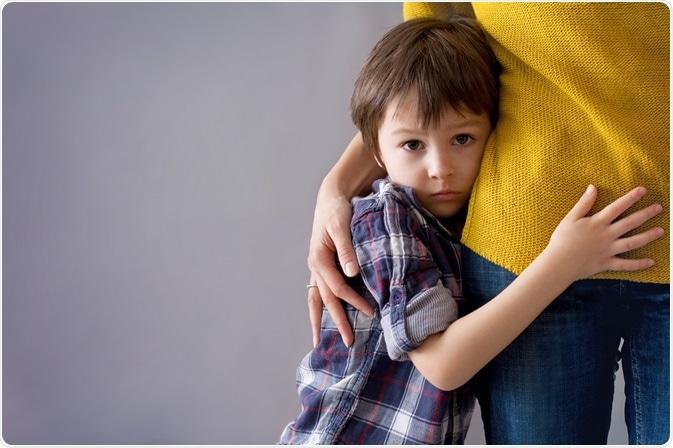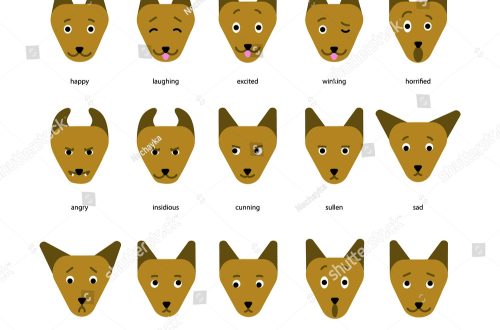
Comforting Your Furry Friend: Tackling Separation Anxiety Together
Comforting Your Furry Friend: Tackling Separation Anxiety Together
In the dance of companionship between humans and their pets, the joy of togetherness can sometimes be marred by the shadow of separation anxiety. For many dogs and cats, the moment their beloved humans step out the door can trigger a symphony of distress—barking, whining, or even destructive behavior. As pet parents, it’s natural to feel a pang of guilt, but you’re not alone in this journey. Understanding and addressing separation anxiety is essential not only for your pet’s emotional well-being but also for nurturing a harmonious household. In this article, we’ll explore effective strategies and comforting techniques to help ease your furry friend’s worries, transforming those heart-wrenching goodbyes into peaceful departures. Together, we’ll navigate the path to a more confident and secure companion, ensuring that both you and your pet can enjoy the time spent apart as much as the time spent together.
Table of Contents
- Understanding the Roots of Separation Anxiety in Pets
- Creating a Safe Haven: Designing a Comforting Space
- Building Resilience: Gradual Desensitization Techniques
- The Role of Routine and Enrichment in Easing anxiety
- Future Outlook

Understanding the Roots of Separation Anxiety in pets
Separation anxiety in pets often stems from a combination of factors that can vary widely among individual animals. Genetics plays a crucial role; certain breeds are predisposed to anxiety disorders, making them more susceptible to stress when left alone. Additionally, past experiences can have a lasting impact—animals that have faced abandonment, frequent changes in their environments, or traumatic events may develop heightened anxiety. It’s also critically important to consider the sociability of your pet; more extroverted animals might struggle more with separation from their human companions, while those that are more independent may adjust with less difficulty.
Understanding these roots can help pet owners craft a tailored approach to alleviate their furry friend’s distress. Here are some key points to consider about separation anxiety in pets:
- Attachment Style: Pets that form strong attachments to their owners may react more negatively to separation.
- Routine changes: Major life changes such as moving to a new home, the arrival of a new family member, or changes in the owner’s schedule can trigger anxiety.
- Early Experiences: Animals that were not properly socialized or those that had negative experiences with being left alone are more prone to anxiety.

Creating a Safe Haven: Designing a Comforting space
Creating a sanctuary for your furry companion begins with understanding their individual needs and preferences. Consider these essential elements when designing their comforting space:
- Cozy Bedding: Choose a soft, plush bed that provides support and warmth, making it a perfect retreat for your pet.
- Safe Chewing Items: Provide durable toys that are not only entertaining but also safe for chewing, alleviating boredom and anxiety.
- Calming Scents: Introduce soothing scents like lavender or chamomile through essential oil diffusers (ensuring they are pet-safe) to create a tranquil atmosphere.
- Personalized Space: Designate an area that is uniquely theirs, with familiar items such as blankets or toys that carry their scent.
Incorporating various calming techniques can further enhance their sense of security. Pay attention to the following:
- Soft Lighting: Use gentle lighting to create a warm ambience, helping your pet feel at ease in their surroundings.
- Background Noise: Consider playing soft music or utilizing a white noise machine to mask unsettling sounds that trigger anxiety.
- Visual Barriers: place furniture or screens to create a cozy nook where they can feel safe and less exposed to external stimuli.
- Interactive Features: Include puzzle toys or hiding spots that stimulate their minds and keep them engaged when alone.

Building Resilience: Gradual Desensitization Techniques
One effective approach to alleviate your pet’s separation anxiety is through gradual desensitization. This technique involves slowly and systematically getting your furry friend accustomed to being alone. Start small by leaving your pet in a safe space with their favorite toys while you step out of the room for just a few minutes. Gradually increase the duration over days or weeks, allowing your pet to become more cozy with the idea that you will always return. Key elements to consider include:
- Consistency is crucial: Try to practice the same routine daily.
- Positive reinforcement: Reward your pet with treats or praise when they remain calm during these alone periods.
- safe space: Create a cozy area with blankets and toys where your pet feels secure.
In addition, monitoring your dog’s behavior during these alone sessions will help you recognize their comfort levels. Make a note of their progress, perhaps by tracking the time they remain calm before showing signs of distress. You might find it helpful to utilize a simple table to visualize their anxiety journey:
| Session Duration | Behavior Observed | Notes |
|---|---|---|
| 5 minutes | Calm | Reward with a treat |
| 10 minutes | light whining | Stay close, reassure gently |
| 15 minutes | Resting | Keep training, positive vibes |
By creating a detailed plan and tracking their improvement, you can effectively aid your pet in developing the resilience needed to face separation anxiety head-on.This method not only fosters independence but also strengthens the bond between you and your furry companion as you tackle this challenge together.

The Role of routine and Enrichment in Easing Anxiety
Establishing a consistent routine can provide your pet with a sense of security,considerably reducing feelings of anxiety. Regular feeding, walking, and playtime create predictable patterns that help your furry friend understand what to expect throughout the day. By integrating these key activities into your daily schedule, you foster an environment of stability that is essential for easing stress. Consider the following components to include in your routine:
- Structured Walks: Aim for regular walk times to promote physical exercise and mental stimulation.
- consistent Feeding Schedule: Offer meals at the same times each day to help establish predictability.
- Playtime: Ensure frequent interactive sessions to strengthen your bond and distract from anxious moments.
Adding enrichment activities further enhances your pet’s well-being and takes their mind off separation anxiety. Enrichment can be anything that engages your pet’s senses, simplifies daily tasks, or introduces new stimuli to their environment. Activities could include the use of puzzle toys, scent games, or even training sessions that challenge their intellect.Consider the following enrichment ideas:
| Activity | Description |
|---|---|
| Toy Puzzle | Puzzles that dispense treats when solved can keep your pet occupied for hours. |
| Scent Trails | Create trails using their favorite treats or toys to led them on an adventure. |
| Training Games | Teach new commands or tricks to stimulate their brain and boost confidence. |
Future Outlook
As we navigate the tender terrain of pet ownership, addressing separation anxiety in our furry companions becomes not just a duty, but a shared journey of understanding and growth. By tuning into their needs and insecurities, we open the door to deeper connections and a more harmonious life together. Remember, it’s not just about soothing their distress; it’s about building resilience and trust, both in ourselves and our pets. With patience, love, and a sprinkle of creativity, we can transform those moments of anxiety into opportunities for bonding, reassurance, and ultimately, joy. So as you embark on this path with your furry friend, know that each small step forward strengthens the unique bond you share, turning challenges into cherished memories. Together, you can create a home that feels safe, warm, and full of unconditional love—one paw at a time.





